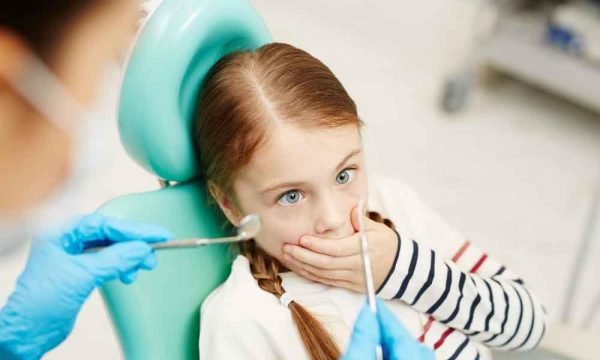The ear is a complex organ. When one of the structures inside the ear becomes damaged, either due to trauma or infection, it can eventually lead to hearing loss and complete deafness. It can also result from the natural aging process.
Those who are born with genetic defects that impact the growth and development of the ear are born with congenital hearing loss. Those who are born with full hearing and lose it during the course of their lifetime have what is known as acquired hearing loss.
Hearing loss can range from mild to severe, depending on the cause and the specific area of the area that has been affected. In mild cases, an individual may be able to continue their life as normal without additional aids. If the hearing loss is severe, hearing aids will be required to improve the individual’s quality of life.
Table of Contents
The Anatomy of the Ear
To understand the causes of deafness, we should first cover the anatomy of the ear. The ear is split into three categories – outer ear, middle ear, and inner ear.
Each part of the ear works closely together to perceive sound waves and convert them into electrical impulses so that the brain can interpret these sound waves. If just one of the three areas of the ear is damaged, deformed, or impaired, it can cause hearing loss or complete deafness.
Here is a breakdown of the three parts of the human ear and their function in hearing.
Outer Ear
This is the area of the ear that is visible. It has a curved shape that helps to trap sound waves and reflect them into the inner ear.
Middle Ear
The middle part of the ear is protected from the outside world by the eardrum. It contains the three smallest bones in the human body called the malleus (hammer bone), incus (anvil bone), and the stapes (stirrup bone).
When sound enters the eardrum, these three bones vibrate and amplify the sound waves. The Eustachian tube connects the middle ear and helps to equalize air pressure
Inner Ear
When sound waves are brought into the inner ear, they are picked up by the cochlea, which is a small, spiral-shaped structure in the inner ear. It converts the sound wave signals into electric impulses that are sent to the brain for interpretation.
The Most Common Causes of Hearing Loss
Here are some of the most common causes of hearing loss across the globe.
Genetic Conditions
When mutations occur in certain areas of the DNA during fetal development, it can cause problems with the development of the ear’s structures. These defects may affect hearing, whether mildly or severely.
Some of the most common genetic conditions that result in hearing loss are Patau syndrome (trisomy 13), Treacher Collins syndrome, and osteogenesis imperfecta.
Hereditary Conditions
Hereditary disorders cause the inner ear to be deformed. In a similar way to genetic conditions, hereditary conditions are caused by changes to the normal DNA inside the cells.
Instead of affecting fetal development directly, hereditary conditions are caused by faulty genes that are passed from parents to offspring.
In Utero Disease Exposure
When a growing fetus is exposed to certain maternal diseases in utero, it can disrupt normal growth and development. The growth of the ear structures can be impacted, and this leads to impaired hearing or deafness when the baby is born.
Diseases that are known to result in deafness in neonates include influenza, mumps, and rubella. Exposure to certain heavy metals may also impact the hearing of newborns.
Certain Diseases
Just as diseases can cause problems with the ear in utero, diseases that are acquired during the course of somebody’s lifetime can impact hearing. Diseases such as mumps, meningitis, and chickenpox are known to cause hearing loss.
Trauma to the Ear
When there is trauma to any area of the ear, it can affect hearing. Issues with the structures of the ear are usually preceded by traumatic head injuries.
For example, when somebody is in a serious car accident, one or both of their eardrums can get perforated or ruptured. Fractures in the skull caused by a severe blow to the head can also cause damage to the inner areas of the ear.
Loud Noises
Sometimes, extremely loud noises can cause damage to the ears. Usually, it’s the long-term exposure to loud noises that cause the gradual deterioration of hearing but in some cases, one-off loud noises can be enough to irreversibly damage the delicate structures within the ear.
For example, working on construction sites where machinery is constantly emitting a lot of sound without wearing protective earmuffs or one-off loud noises, such as gunshots or explosions, can result in hearing loss.
Aging
Hearing is accepted by society as a natural part of the aging process. Over time, the ear becomes less efficient at collecting and transferring sound waves. As a result, hearing declines.
Usually, age-related hearing loss begins with the loss of the ability to perceive sounds with high frequencies and high pitches. Older people might struggle to distinguish between certain letters that sound very similar.
Lots of different aids are offered to aging individuals to combat age-related hearing loss, such as hearing aids. In recent years, hearing aids have become more advanced and more powerful to help older adults retain as much of their hearing as possible.
Tinnitus
Although tinnitus is not a disease in and of itself, it can result in hearing loss. Tinnitus refers to the sensation of noise in the ears, despite no environmental sound being perceived.
Most people experience tinnitus as a buzzing, whistling, or ringing in the ears. Everybody can experience this every so often for very short periods of time (a few seconds), but others can experience it much more often. Long-term tinnitus is associated with reduced hearing.





